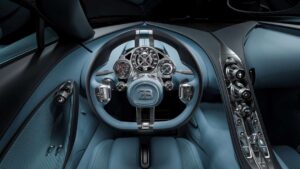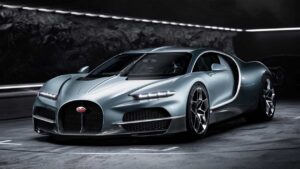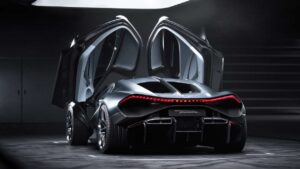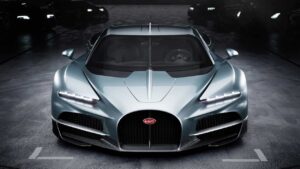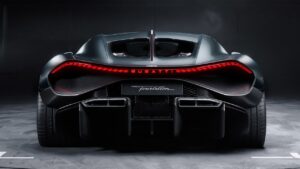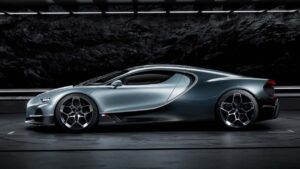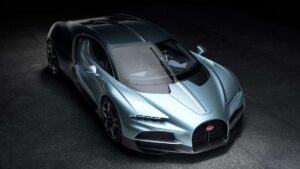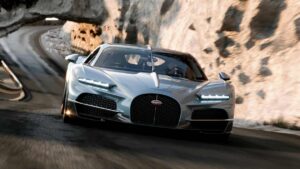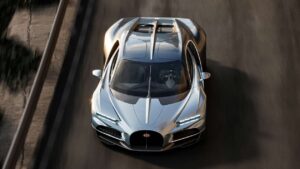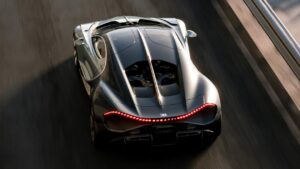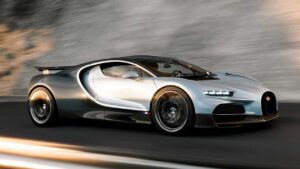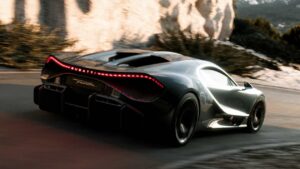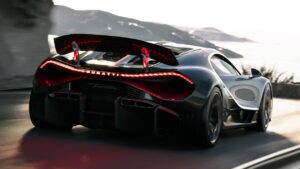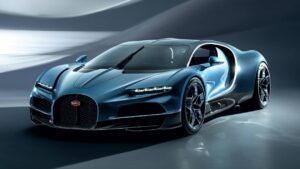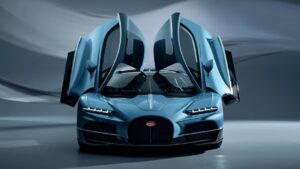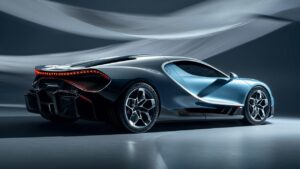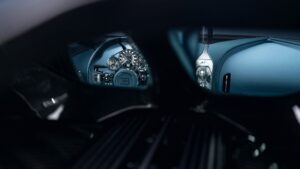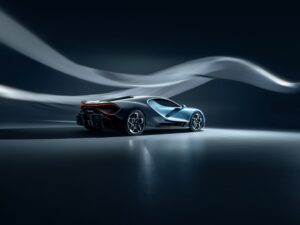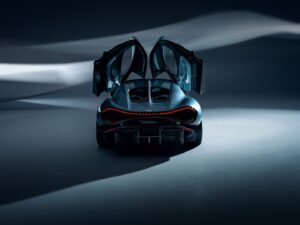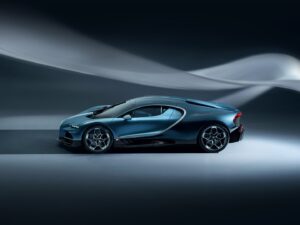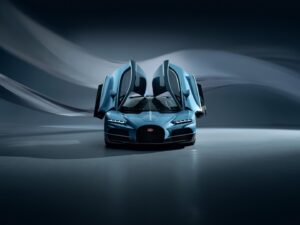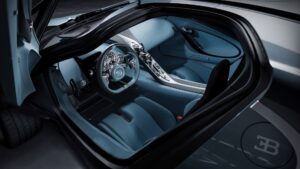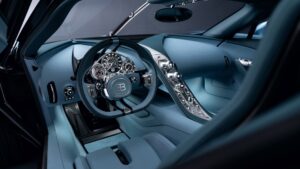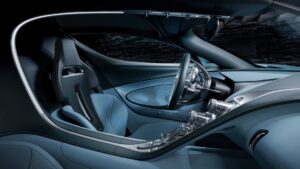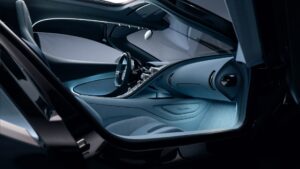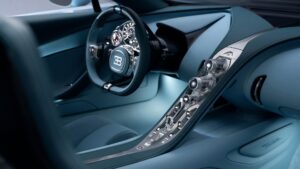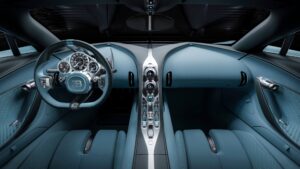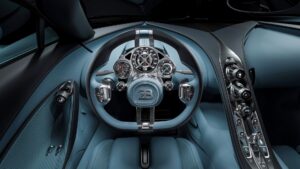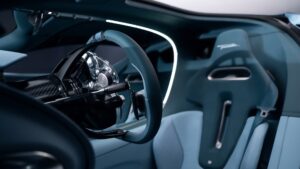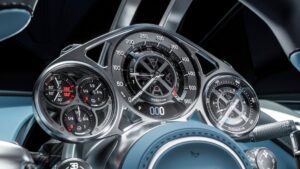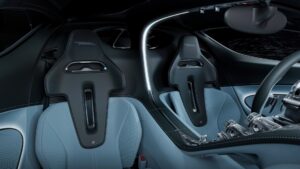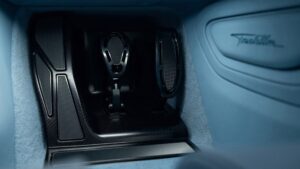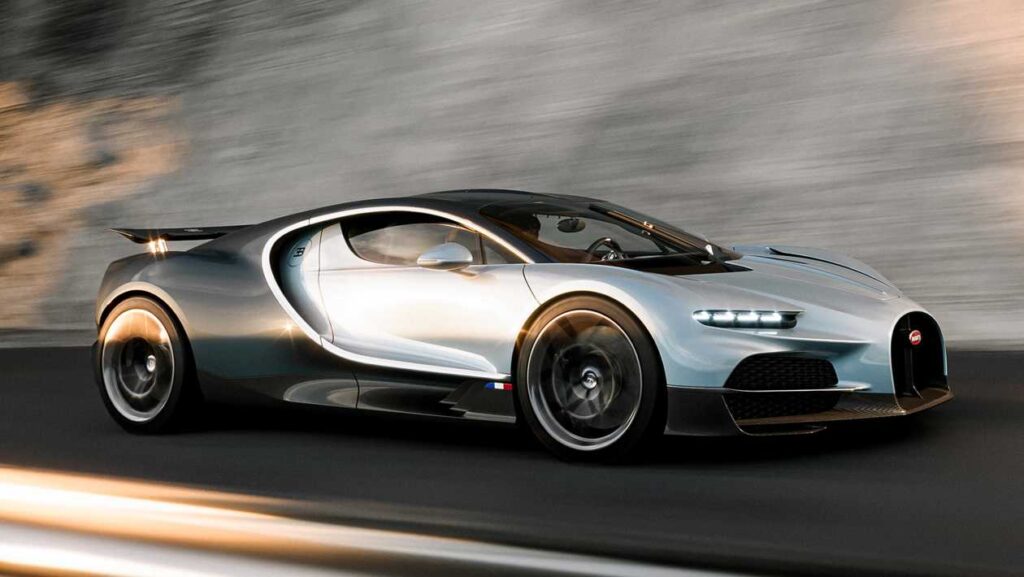
It’s a rare occurrence when a completely new Bugatti is introduced. This brand has been a consistent leader in the hypercar arena, and the new Bugatti Tourbillon continues this tradition, standing alongside the Veyron and Chiron by representing a significant advancement in this elite automotive category.
This car, like its predecessors, is defined by impressive numbers, though the methods of achieving them have evolved dramatically and are arguably even more impressive. The iconic W16 engine is no more, replaced by an all-new, naturally aspirated V16. This powerful engine is complemented by a substantial hybrid module composed of three electric motors and a 25kWh battery pack. The combined peak power reaches an astonishing 1,775 hp (1,324 kW), with Bugatti confirming a 60 km (37-mile) electric range for the Tourbillon.
The V16 engine in the Bugatti Tourbillon is developed in collaboration with Cosworth from the UK, making it the first production car in over 85 years to feature a V16 engine when it enters production in 2026. This 8.3-litre powerplant alone generates 986 hp (735 kW), matching the original Bugatti Veyron’s output which had a quad-turbo layout.
Three electric motors, drawing on Rimac’s expertise in electric supercars, are integrated into the Tourbillon’s powertrain. The first motor is placed between the petrol engine and transmission, while the other two power the fully electric front axle, similar to the setup in the Lamborghini Revuelto. This configuration allows Bugatti to utilize the space in the car’s central tunnel for the 25kWh battery pack and other electronics, unencumbered by a physical connection between the combustion engine and the front axle.
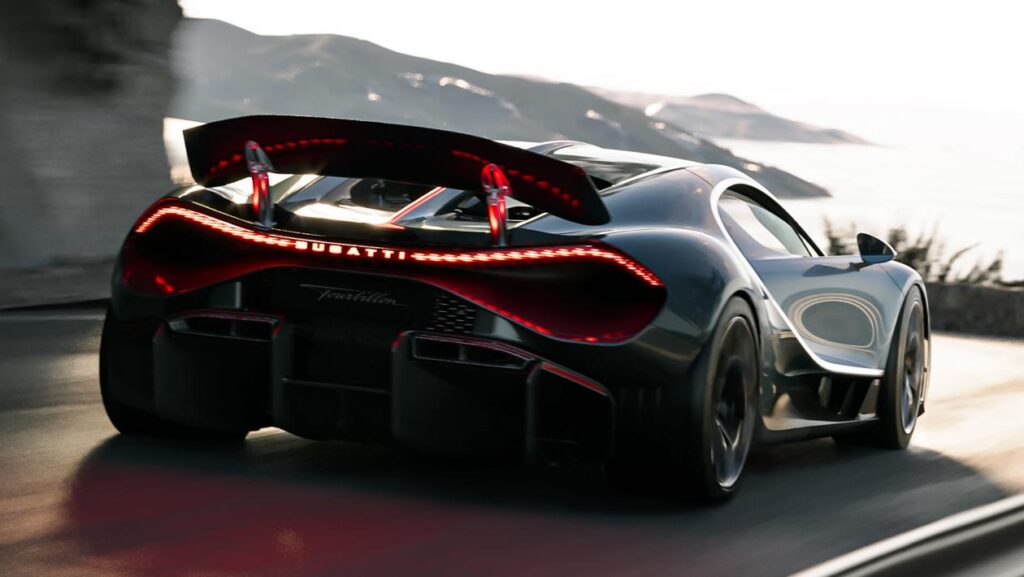
Operating on an 800V electrical system and featuring advanced electric motor technology, these motors contribute the remaining 788 hp (588 kW) to achieve the car’s peak power. While precise performance metrics are not yet confirmed, Bugatti indicates the Tourbillon can reach 100 km/h (62mph) in two seconds, 200 km/h (124 mph) in under five seconds, 300 km/h (186 mph) in less than ten seconds, and 400 km/h (248 mph) in under 25 seconds. The projected top speed is 445 km/h (275 mph), which is slightly reduced from the Bugatti Chiron Supersport 300+ due to the high-speed limitations of the electric motors.
Supporting this extraordinary powertrain is a brand new chassis, employing cutting-edge material technology. The composite structure is distinct from the Veyron and Chiron, with a carbon fibre rear crash structure and integral air intakes. New, lightweight 3D-printed aluminium subframes support the front and rear suspension, which also benefit from extensive use of 3D printing technology for components.
The braking system utilizes carbon ceramic brakes managed by an enhanced brake-by-wire system that blends regenerative and friction braking systems. Unique Michelin Pilot Sport Cup 2 tyres in staggered 20- and 21-inch sizes, are specifically designed for the Tourbillon.
Visually, the Bugatti Tourbillon might not seem a dramatic departure from its predecessors at first glance, but upon closer inspection, the design details stand out. The design incorporates a distinctive spine, inspired by the 1936 Bugatti Type 57S Atlantic, prominently seen on the bonnet, vertically-mounted wiper, roof trim, and third brake light. The classic Bugatti C-shape remains but with a new, more aggressive glasshouse created by the upward flick of the window line.
Inside, the Tourbillon retains the Chiron’s main themes, such as the four vertically-mounted control dials and a clean dashboard. The ornate steering wheel boss and instrument cluster are distinct, with controls integrated into a static boss at the 12- and 6-o’clock positions. Uniquely, the car features Bugatti’s first infotainment screen, mounted on a folding mechanism that allows it to switch between portrait and landscape orientations.
The Bugatti Tourbillon’s production is scheduled for commencement in 2026, following the completion of the last Chirons. Only 250 units will be produced, each starting at 3.8 million euros (approx. R73 million), before taxes.
While variants, derivatives, and special editions are anticipated, this marks the beginning of Bugatti’s new era.

